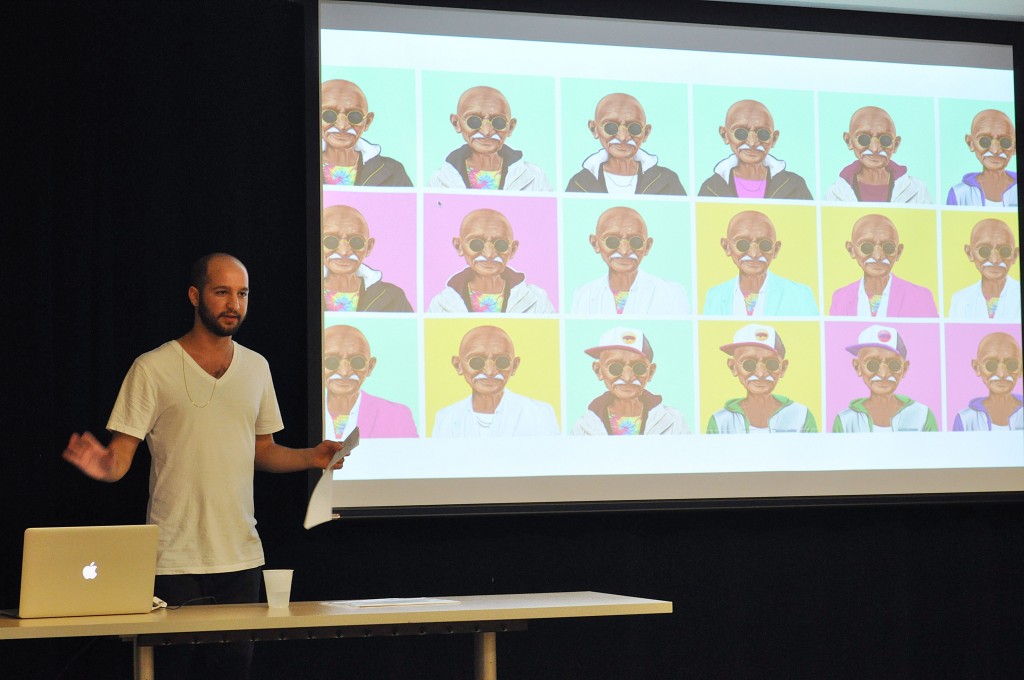
Israeli artist Amit Shimoni takes iconic images of dignified political and historical figures and recreates them as hipsters. On Thursday evening, he came to Binghamton University to speak about his work.
Shimoni’s collection includes Nelson Mandela with a high-length, flat-top haircut and earrings; Hillary Clinton with a gold chain necklace sporting a grey-to-purple ombre hairstyle; and Israel’s first prime minister, David Ben-Gurion, dressed in a pink pineapple button-up wearing Ray-Ban sunglasses. The name of his collection is “Hipstory,” and according to him, the recreations make each individual more personable.
“The distance between us and them closes,” Shimoni said. “I look at the pineapple shirt, I immediately want to hug him and say ‘let’s go have a beer.’”
Joshua Seed, the president of Bearcats for Israel and a senior double-majoring in geography and Judaic studies, said he was contacted about Shimoni by StandWithUs, an Israeli national organization that hosts programs in an effort to support Israel.
“I’ve been seeing his original pieces about Israeli politicians that have been around social media,” Seed said. “StandWithUs reached out to us and mentioned they were going to be bringing him to the states and asked us if we would be able to host him in Binghamton, and I said yes immediately.”
During the event, Shimoni first shared a short movie of clips of himself working in Israel and then gave a presentation and talked about the inception of and inspiration behind “Hipstory.” After studying at the Bezalel Academy of Arts and Design in Jerusalem, he observed Berlin’s thriving hipster culture during a month-long trip.
“In my eyes, creation is taking something from the world and putting it in a filter,” Shimoni said. “Aesthetics is one way to capture the audience and make them look deeper, then artists can deliver our message.”
Shimoni said his work will give a new perspective, not only to how the viewer sees those around them, but how people view those they idolize.
“I often find myself imagining a world where some of these leaders are less interested in influencing lives, and more focused on their own persona,” Shimoni wrote in an email. “Imagine Gandhi obsessing about his looks, and not about releasing India from the British rule?”
Adin Fuchs, a junior double-majoring in business administration and art and design, said the she thinks Shimoni’s artwork is unique, especially the recreation of Ben-Gurion.
“My favorite image is the one of Ben-Gurion because it captures who he was supposed to be,” Fuchs said. “He’s described as this really fun man and this image really depicts the personality that I grew up hearing about.”
Seed said he was happy with the turnout of the event and hoped that students walk away with a different perspective of Israel, and also an idea of how art can bring people together.
“He was talking about art and about how all these people all over the world are connecting with the art,” Seed said. “I think it’s that message of art, that art transcends borders and it’s giving people a new way to understand world figures and people in history.”


